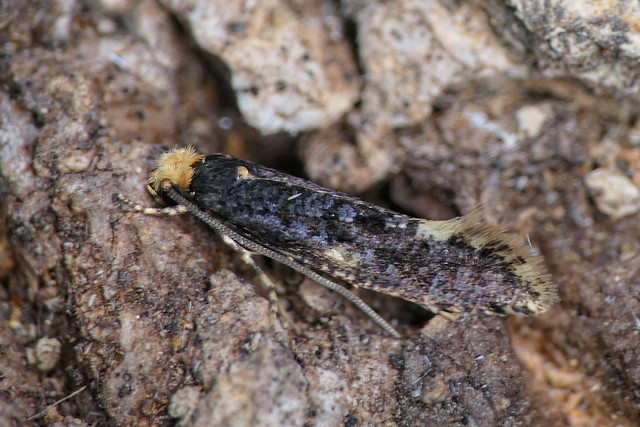Tineidae

The Tineidae are a family of over 2,500 species of small moths in the superfamily Tineoidea, with 63 species recorded in the UK and around 300 in Europe. The family was established by Pierre André Latreille in 1810.
Adults have wingspans of 6–30 mm, with narrow, often fringed wings held roof-like at rest. Coloration is usually dull—brown, gray, or golden—with subtle patterns; many species are difficult to identify without genital dissection. Most are nocturnal or crepuscular.
Larvae feed on keratin-rich materials (fur, feathers, wool), fungi, lichens, or detritus; some inhabit bird nests, animal burrows, or stored products. Notable pests include Tineola bisselliella (common clothes moth) and Tinea pellionella (case-bearing clothes moth).
The family includes subfamilies such as Tineinae (clothes moths), Nemapogoninae (with Nemapogon granella, European grain moth), and Scardiinae. Recent studies use DNA barcoding to resolve cryptic species and clarify larval substrates.


